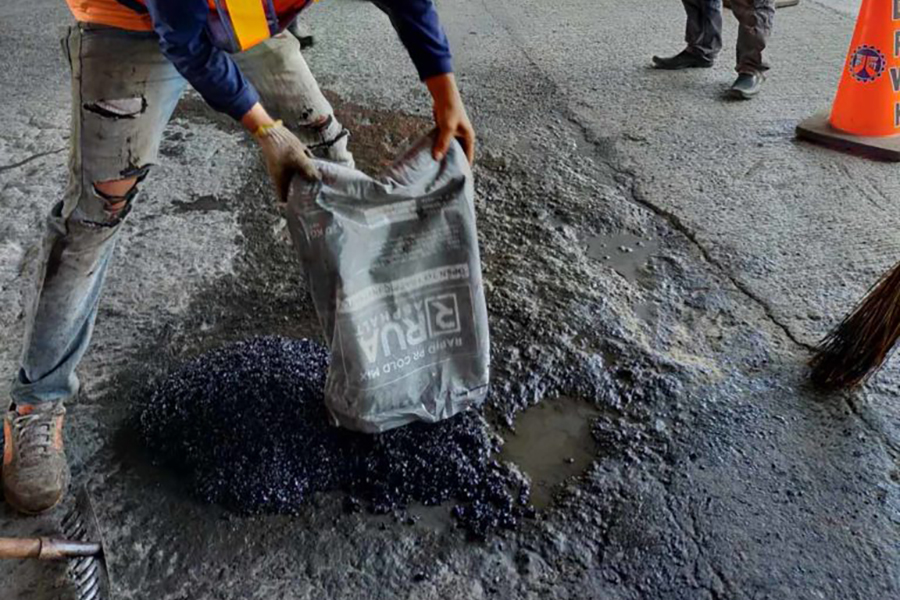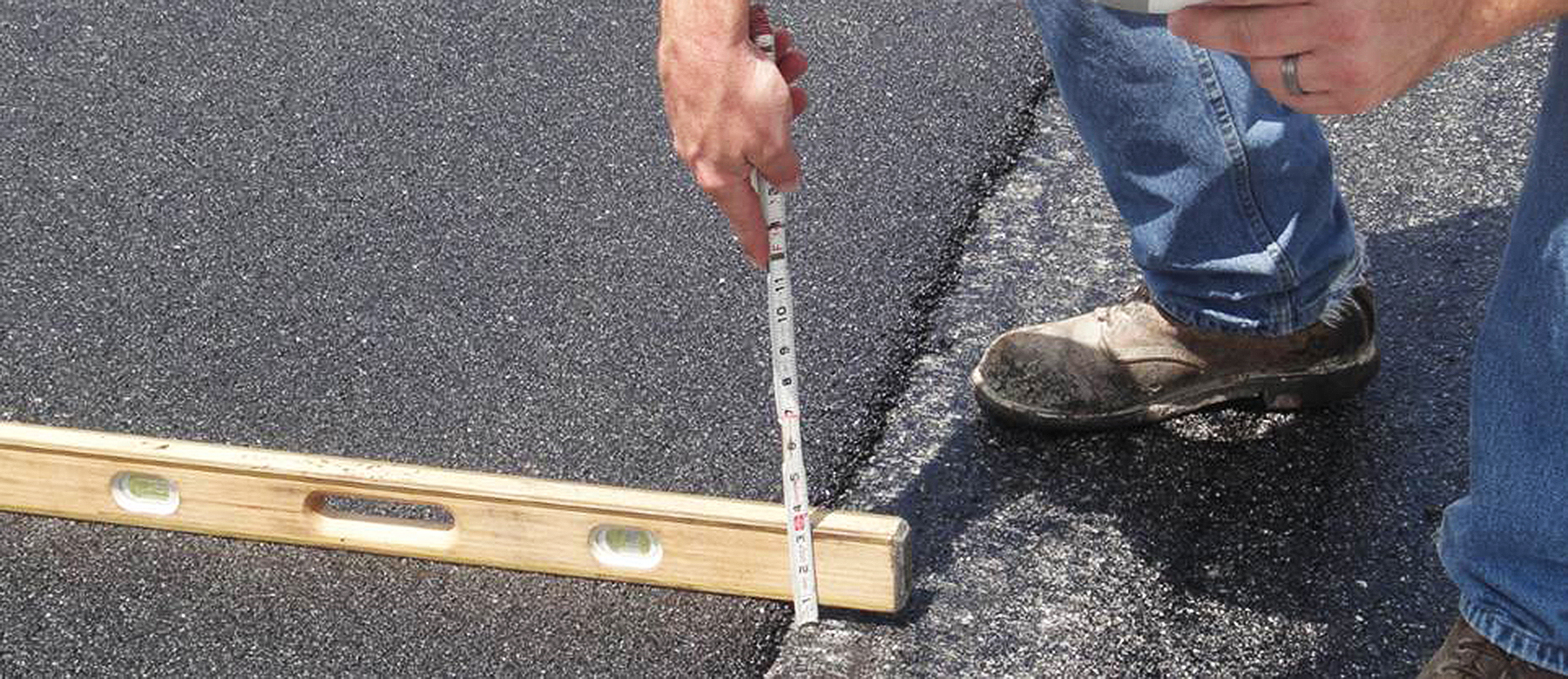Hot Mix Asphalt Paving: Elevating Commercial Parking Lot Requirements
Hot Mix Asphalt Paving: Elevating Commercial Parking Lot Requirements
Blog Article
Unlocking the Tricks of Warm Mix Asphalt Modern Technology
Discovering the midsts of hot mix asphalt innovation uncovers a world where meticulous procedures and specific solutions merge to form our roadways and facilities. The combination of aggregates, fillers, and binders isn't just a building and construction job however a calculated orchestration of toughness and effectiveness. As we peer into the elaborate dance of parts, a tapestry of strength and sustainability unravels. However what lies beneath this surface area of asphaltic mastery, and what secrets wait to be introduced in the world of paving developments?
Value of Warm Mix Asphalt
Hot Mix Asphalt plays an important role in contemporary framework advancement as a result of its sturdiness and cost-effectiveness. As one of the most generally utilized leading material for roadways, freeways, and car park, Hot Mix Asphalt uses a range of advantages that add to its importance in building and construction projects. One essential benefit is its ability to stand up to rush hour tons and rough climate condition, giving a long-lasting and trustworthy surface area for transport networks. Additionally, Hot Mix Asphalt is economical in both first construction and long-term maintenance, making it a favored option for several framework projects.
The sturdiness of Hot Mix Asphalt comes from its composition, that includes aggregates, binder, and filler products that are meticulously selected and mixed to satisfy particular performance requirements. This precise mix causes a solid and versatile sidewalk that can sustain constant use without significant wear and tear. Furthermore, Hot Mix Asphalt is 100% recyclable, additional improving its sustainability and environmental benefits. Generally, the significance of Warm Mix Asphalt in framework advancement can not be downplayed, as it remains to be a cornerstone of modern-day building and construction techniques.
Parts of Asphalt Mixes
The structure of asphalt blends contains meticulously chosen accumulations, binder, and filler materials that are crucial for accomplishing specific performance requirements. Accumulations are the primary element of asphalt blends, offering toughness and stability. These aggregates can be all-natural, such as gravel or crushed rock, or synthetic, like recycled materials from old sidewalks. The binder, generally asphalt or asphalt concrete, holds the aggregates with each other and gives flexibility and resilience to the mix. The option of the binder is essential as it straight affects the mix's efficiency in different weather condition problems. Fillers, such as moisturized lime or Portland cement, are utilized to boost the mix's workability and aging resistance. Angled Parking.
The mix and percentage of these components play a significant function in figuring out the quality and performance of the asphalt mix. Engineers very carefully create the mix to fulfill details needs, taking into consideration variables like website traffic quantity, environment problems, and pavement life expectancy. Proper selection and balancing of accumulations, binder, and fillers are essential for developing sturdy, durable asphalt sidewalks.
Combining and Manufacturing Methods

Once the aggregates are selected, the binder, commonly asphalt concrete, is included to bind the products with each other. The binder's top quality and amount dramatically influence the mix's stamina, resistance, and flexibility to ecological aspects. Furthermore, fillers like hydrated lime or Portland cement may be incorporated to boost details features of the asphalt mix, such as its workability or dampness resistance.
Throughout production, the accumulations and binder are heated up, generally between 250-325 ° F(121-163 ° C ), to facilitate blending and make sure appropriate covering of the aggregates. The blending process must be thorough to accomplish a homogeneous mix that promotes the wanted performance characteristics of the asphalt. Numerous web link methods, such as batch mixing or drum mixing, are used to accomplish consistent and high-quality asphalt mixes for building and construction jobs.
Factors Influencing Asphalt Performance
Aspects influencing asphalt efficiency encompass a variety of variables that affect the durability, durability, and total top quality of asphalt pavements. One essential aspect is the top quality of products made use of in the asphalt mix.

Style considerations, such as sidewalk density and drainage, are necessary in making certain the long-term performance of the asphalt pavement. By carefully taking into consideration these elements, designers and specialists can enhance asphalt performance and enhance the solution life of sidewalks.
Lasting Practices in Asphalt Innovation

Additionally, the development of warm-mix asphalt (WMA) modern technologies has actually obtained grip over the last few years. WMA enables for the production and positioning of asphalt blends at lower temperature levels contrasted to standard hot-mix asphalt, leading to reduced power consumption and greenhouse gas emissions. Furthermore, using permeable asphalt blends can help mitigate stormwater drainage problems by allowing water to penetrate with the sidewalk and right into the ground, promoting natural water filtering and recharge procedures. By executing these lasting methods, the asphalt sector can add to constructing a much more durable and environmentally friendly infrastructure network.
Final Thought
To conclude, hot mix asphalt modern technology plays an essential function in contemporary facilities development because of its durability and cost-effectiveness. By thoroughly balancing elements, utilizing appropriate blending methods, and thinking about different aspects, designers can produce top notch asphalt blends that hold up against rush hour tons and rough climate problems. Welcoming lasting techniques, such as utilizing recycled products and warm-mix innovations, further enhances the ecological kindness of asphalt innovation.
Mixing and production strategies in warm mix asphalt innovation involve the precise mix and handling of aggregates, binder, and fillers to develop a high-performance and long lasting asphalt mix.Elements influencing asphalt performance incorporate an news array of variables that affect the resilience, longevity, and total high quality of asphalt pavements. Lasting practices in asphalt modern technology include various campaigns aimed at reducing the ecological impact of asphalt production and paving processes. By integrating reclaimed asphalt sidewalk (RAP) and recycled asphalt shingles (RAS) right into new asphalt blends, the industry can dramatically decrease the intake of raw materials and power, while likewise lowering garbage dump waste.
WMA permits for the manufacturing and placement of asphalt blends at reduced temperatures this link contrasted to traditional hot-mix asphalt, resulting in lowered energy usage and greenhouse gas emissions.
Report this page